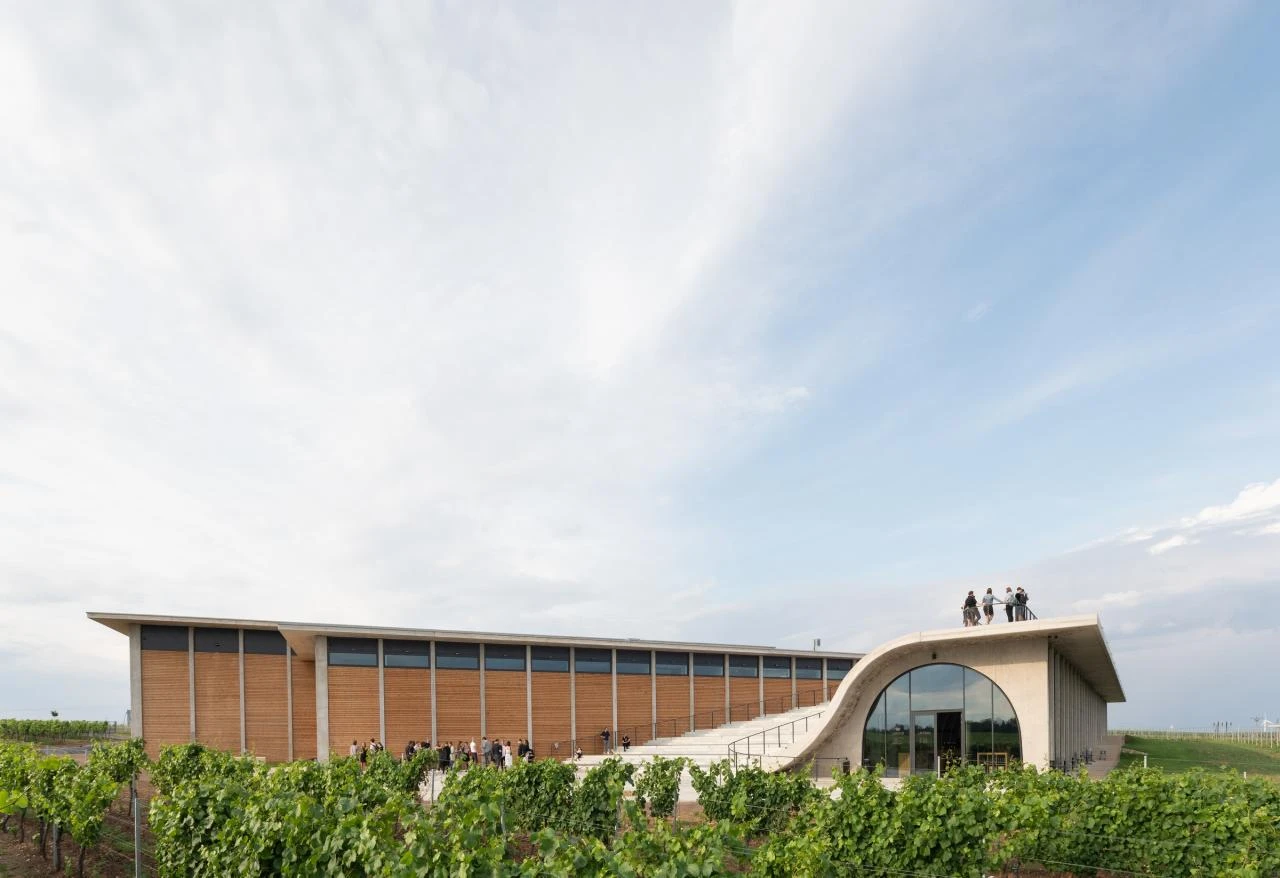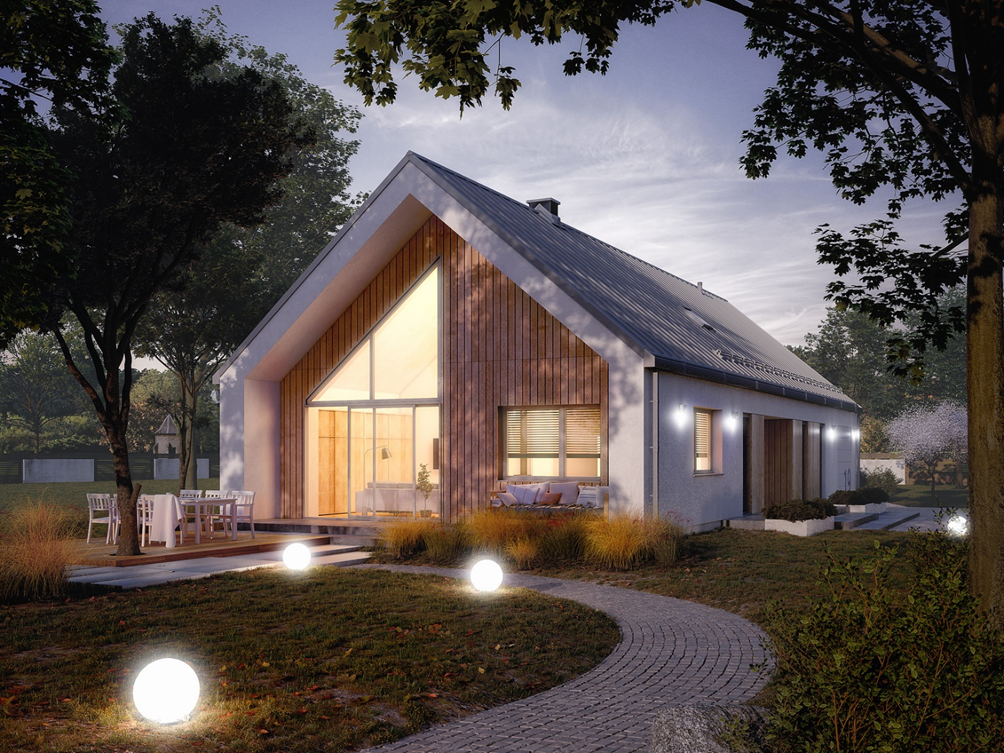Building a sustainable future: How to construct eco-friendly homes

Vinařství Lahofer, Dobsice, Czech Republic. Used systems: MB-104 PASSIVE, MB-ST50N, MB-78EI
Climate change presents one of the most pressing challenges of our time, largely driven by excessive carbon dioxide emissions. This underscores the importance of integrating eco-friendly solutions in modern construction. Sustainable building, which leverages renewable energy and reduces CO2 emissions, addresses the needs of both our environment and future generations.
Sustainable construction and the realization of zero-energy buildings are central to the European Union's Energy Performance of Buildings Directive (EPBD) revision efforts. Similarly, the United Nations' Agenda 2030 for sustainable development, adopted in 2015, identifies innovative industry, infrastructure, and sustainable cities and communities as pivotal global goals for the coming years.
Sustainable development for the future
To grasp the principles of sustainable building, one must first understand sustainable development. Defined in the 1987 World Commission on Environment and Development Report, "Our Common Future," sustainable development is described as: development that meets the needs of the present without compromising the ability of future generations to meet their own needs.
Given that buildings within the EU account for 40% of energy use and 36% of greenhouse gas emissions, the implementation of modern construction solutions that enhance building energy efficiency is crucial for future generations. Renewable energy sources, energy-efficient design, and advanced insulation systems like technologically sophisticated aluminum systems are just a few measures that support sustainable construction practices.
Harnessing nature's energy
A proactive approach to reduce greenhouse gas emissions involves minimizing fossil fuel use in electricity generation. Eco-friendly alternatives include renewable sources such as wind, geothermal, and solar energy, which are gaining popularity. In 2020, renewable energy accounted for 22.1% of energy consumption in the EU.
While wind and geothermal energy require specialized installations, solar energy can be harnessed through photovoltaic systems, solar collectors, and strategic glazing placement that considers building orientation.
The implementation of sustainable building practices includes installing passive windows, which absorb significant solar energy and minimize heat loss. A passive window’s heat transfer coefficient should not exceed 0.8 W/m2K explains Tomáš Buček, Project Business Manager at Aluprof System Czech s.r.o. Additionally, aluminum structures, known for their usability, safety, durability, and protection against external elements such as wind, water, and noise, are well-aligned with sustainable building characteristics he adds.
The installation of passive windows is made possible with solutions like the MB-79N Aluprof aluminum window and door system with thermal insulation. This product fulfills heightened thermal insulation requirements and allows design flexibility with various options for windows (e.g., tilt-and-turn, tilt-and-slide) and doors, including single and double-leaf variations or storefront solutions.
Energy-designed homes
Sustainable building solutions and products must be considered at the design stage. Optimal natural energy utilization hinges not only on correct building orientation but also on effective insulation of internal walls to eliminate thermal bridges. Specialized thermal and airtight installation systems, such as MB-Installation Solution for aluminum windows and doors, ease the elimination of leaks by enabling installation in the thermal insulation layer.
Comprehensive solutions with superior parameters
In sustainable construction, the selection criteria for components and solutions should include superior insulation parameters. The thermal insulation coefficient (the lower, the better) and air permeability class are crucial metrics. Energy efficiency is also supported by appropriate certifications confirming system performance. For instance, the Passive House Institute PHI Darmstadt certifies the MB-104 Passive window and door system with thermal breaks, facilitating stylish, glazed, and functional facades.
An essential aspect of sustainable building is comprehensive solutions for low-energy construction, including window, door, and facade systems, as well as installation systems. Aluprof meets market expectations with optimal solutions, exemplified by panel doors that can integrate with MB-79N or MB-104 Passive systems, offering thermal and acoustic insulation, water and air tightness, and modern style with multiple colors and designs available.
Recycling in construction
Recycling used materials is a key facet of sustainable construction. This practice is particularly effective in the aluminum industry, where Aluprof reported a scrap content of 65% in 2022. The company recycles its own waste and reclaims and processes aluminum from the market, sourcing post-consumer and pre-consumer waste. Rigorous quality controls ensure that only clean aluminum is remelted, preventing harmful compounds from endangering the environment. This energy-efficient process saves approximately 95% of the energy required to produce primary aluminum from bauxite and similarly reduces air and water pollution.

Barn House Style Project Jemioła 4
Eco-return to the "old"
A trending aspect of contemporary sustainable construction is the revival of minimalist building forms inspired by rural aesthetics. Barn houses, styled after traditional barns, are increasingly popular, driven by lower investment costs and an embrace of nature through large glass surfaces. Beyond cost efficiency, barn houses offer notable energy efficiency.
Barns can be developed using passive or low-energy building techniques, significantly impacting long-term utility expenses highlights Tomáš Buček. This goal is realized through Aluprof aluminum systems that ensure high insulation performance and versatile design options due to material flexibility he adds.
Let’s build a better future!
Sustainable construction, despite significant investment costs, is a prevailing trend globally. This is attributable not just to the pursuit of technological innovation in construction but also to creating tangible environmental impacts. Sustainable building, through the promotion of passive homes, effectively reduces greenhouse gas emissions and energy consumption in the sector.
Passive homes can cut energy use for heating and cooling by up to 90% compared to typical buildings and over 75% compared to average new buildings emphasizes Tomáš Buček.
Today's decisions on component selection, project investment, and energy consumption directly influence the living conditions of future generations.
